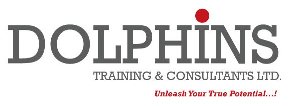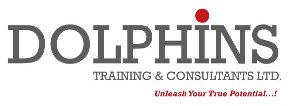
Here Is Your Ability To Move Forward;
►Hard work always beats lazy talent,and the talented hard work trumps everything.So set your alarm clock.Set it for early...
![]() Essential Consultancy Services..
Essential Consultancy Services..
![]() Top Strategies Implementation,Execution and more for you...
Top Strategies Implementation,Execution and more for you...

Venue ; Best Western Plus Hotel Westlands - Nairobi
Date; 26th To 30th January 2026 (Five Days)
.jpg)
Venue ; Best Western Plus Hotel Westlands - Nairobi
Date; 26th To 30th January 2026 (Five Days)
.jpg)

Enterprise resource planning (ERP) is business management software—typically a suite of integrated applications—that a company can use to collect, store, manage and interpret data from many business activities, including:
• Product planning, cost
• Manufacturing or service delivery
• Marketing and sales
• Inventory management
• Shipping and payment
ERP provides an integrated view of core business processes, often in real-time, using common databases maintained by a database management system. ERP systems track business resources—cash, raw materials, production capacity—and the status of business commitments: orders, purchase orders, and payroll. The applications that make up the system share data across the various departments (manufacturing, purchasing, sales, accounting, etc.) that provide the data.
IT investments have become the largest category of capital expenditure in in many organizations over the past decade. Though early ERP systems focused on large enterprises, smaller enterprises increasingly use ERP systems.
The ERP system is considered a vital organizational tool because it integrates varied organizational systems and facilitates error-free transactions and production. However, ERP system development is different from traditional systems development.ERP systems run on a variety of computer hardware and network configurations, typically using a database as an information repository.
Functional areas of ERP
An ERP system covers the following common functional areas. In many ERP systems these are called and grouped together as ERP modules:
• Financial accounting: General ledger, fixed asset, payables including vouchering, matching and payment, receivables cash application and collections, cash management, financial consolidation
• Management accounting: Budgeting, costing, cost management, activity based costing
• Human resources: Recruiting, training, rostering, payroll, benefits, diversity management, retirement, separation
• Manufacturing: Engineering, bill of materials, work orders, scheduling, capacity, workflow management, quality control, manufacturing process, manufacturing projects, manufacturing flow, product life cycle management
• Order Processing: Order to cash, order entry, credit checking, pricing, available to promise, inventory, shipping, sales analysis and reporting, sales commissioning.
• Supply chain management: Supply chain planning, supplier scheduling, product configurator, order to cash, purchasing, inventory, claim processing, warehousing (receiving, putaway, picking and packing).
• Project management: Project planning, resource planning, project costing, work breakdown structure, billing, time and expense, performance units, activity management
• Customer relationship management: Sales and marketing, commissions, service, customer contact, call center support — CRM systems are not always considered part of ERP systems but rather Business Support systems (BSS).
• Data services : Various "self–service" interfaces for customers, suppliers and/or employees
Implementation
ERP's scope usually implies significant changes to staff work processes and practices.Generally, three types of services are available to help implement such changes—consulting, customization, and support.
Implementation time depends on business size, number of modules, customization, the scope of process changes, and the readiness of the customer to take ownership for the project. Modular ERP systems can be implemented in stages. The typical project for a large enterprise takes about 14 months and requires around 150 consultants.Small projects can require months; multinational and other large implementations can take years.[citation needed] Customization can substantially increase implementation times.
Besides that, information processing influences various business functions e.g. some large corporations like Wal-Mart use a just in time inventory system. This reduces inventory storage and increases delivery efficiency, and requires up-to-date-data. Before 2014, Walmart used a system called Inforem developed by IBM to manage replenishment.
Process preparation
Implementing ERP typically requires changes in existing business processes.Poor understanding of needed process changes prior to starting implementation is a main reason for project failure.The difficulties could be related to the system, business process, infrastructure, training, or lack of motivation.
It is therefore crucial that organizations thoroughly analyze business processes before they implement ERP software. Analysis can identify opportunities for process modernization. It also enables an assessment of the alignment of current processes with those provided by the ERP system. Research indicates that risk of business process mismatch is decreased by:
• Linking current processes to the organization's strategy
• Analyzing the effectiveness of each process
• Understanding existing automated solutions
ERP implementation is considerably more difficult (and politically charged) in decentralized organizations, because they often have different processes, business rules, data semantics, authorization hierarchies, and decision centers.This may require migrating some business units before others, delaying implementation to work through the necessary changes for each unit, possibly reducing integration (e.g., linking via Master data management) or customizing the system to meet specific needs.
A potential disadvantage is that adopting "standard" processes can lead to a loss of competitive advantage. While this has happened, losses in one area are often offset by gains in other areas, increasing overall competitive advantage.
Configuration
Configuring an ERP system is largely a matter of balancing the way the organization wants the system to work with the way it was designed to work. ERP systems typically include many settings that modify system operations. For example, an organization can select the type of inventory accounting—FIFO or LIFO—to use; whether to recognize revenue by geographical unit, product line, or distribution channel; and whether to pay for shipping costs on customer returns.
Customization
ERP systems are theoretically based on industry best practices, and their makers intend that organizations deploy them as is.[34][35] ERP vendors do offer customers configuration options that let organizations incorporate their own business rules, but often feature gaps remain even after configuration is complete.
ERP customers have several options to reconcile feature gaps, each with their own pros/cons. Technical solutions include rewriting part of the delivered software, writing a homegrown module to work within the ERP system, or interfacing to an external system. These three options constitute varying degrees of system customization—with the first being the most invasive and costly to maintain.[36] Alternatively, there are non-technical options such as changing business practices or organizational policies to better match the delivered ERP feature set. Key differences between customization and configuration include:
• Customization is always optional, whereas the software must always be configured before use (e.g., setting up cost/profit center structures, organizational trees, purchase approval rules, etc.).
• The software is designed to handle various configurations, and behaves predictably in any allowed configuration.
• The effect of configuration changes on system behavior and performance is predictable and is the responsibility of the ERP vendor. The effect of customization is less predictable. It is the customer's responsibility, and increases testing activities.
• Configuration changes survive upgrades to new software versions. Some customizations (e.g., code that uses pre–defined "hooks" that are called before/after displaying data screens) survive upgrades, though they require retesting. Other customizations (e.g., those involving changes to fundamental data structures) are overwritten during upgrades and must be reimplemented.
Customization advantages include that it:
• Improves user acceptance[38]
• Offers the potential to obtain competitive advantage vis-à-vis companies using only standard features
Customization disadvantages include that it:
• Increases time and resources required to implement and maintain[36]
• Inhibits seamless communication between suppliers and customers who use the same ERP system uncustomized
• Can create over reliance on customization, undermining the principles of ERP as a standardizing software platform
Advantages
The fundamental advantage of ERP is that integrated myriad businesses processes saves time and expense. Management can make decisions faster and with fewer errors. Data becomes visible across the organization. Tasks that benefit from this integration include:
• Sales forecasting, which allows inventory optimization.
• Chronological history of every transaction through relevant data compilation in every area of operation.
• Order tracking, from acceptance through fulfillment
• Revenue tracking, from invoice through cash receipt
• Matching purchase orders (what was ordered), inventory receipts (what arrived), and costing (what the vendor invoiced)
ERP systems centralize business data, which:
• Eliminates the need to synchronize changes between multiple systems—consolidation of finance, marketing, sales, human resource, and manufacturing applications
• Brings legitimacy and transparency to each bit of statistical data
• Facilitates standard product naming/coding
• Provides a comprehensive enterprise view (no "islands of information"), making real–time information available to management anywhere, any time to make proper decisions
• Protects sensitive data by consolidating multiple security systems into a single structure
Benefits
• ERP can improve quality and efficiency of the business. By keeping a company's internal business processes running smoothly, ERP can lead to better outputs that may benefit the company, such as in customer service and manufacturing.
• ERP supports upper level management by providing information for decision making.
• ERP creates a more agile company that adapts better to change. ERP makes a company more flexible and less rigidly structured so organization components operate more cohesively, enhancing the business—internally and externally.
• ERP can improve data security. A common control system, such as the kind offered by ERP systems, allows organizations the ability to more easily ensure key company data is not compromised.
• ERP provides increased opportunities for collaboration. Data takes many forms in the modern enterprise. Documents, files, forms, audio and video, emails. Often, each data medium has its own mechanism for allowing collaboration. ERP provides a collaborative platform that lets employees spend more time collaborating on content rather than mastering the learning curve of communicating in various formats across distributed systems.
Please Feel free to Contact us Today with all of your Requirements, email consultancy@dolphinsgroup.co.ke
Venue ; Best Western Hotel Wstlands - Nairobi
Date; 26th To 30th January 2026 (Five Days)
.jpg)
Venue ; Best Western Hotel Westands - Nairobi
Date; 26th To 30th January 2026 (Five Days)


.jpg)
.jpg)

.gif)


.jpg)
.jpg)


.jpg)